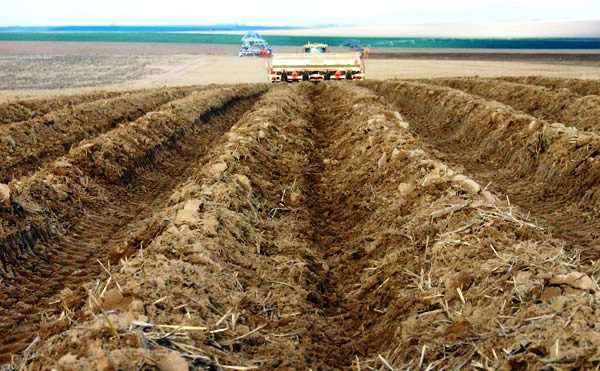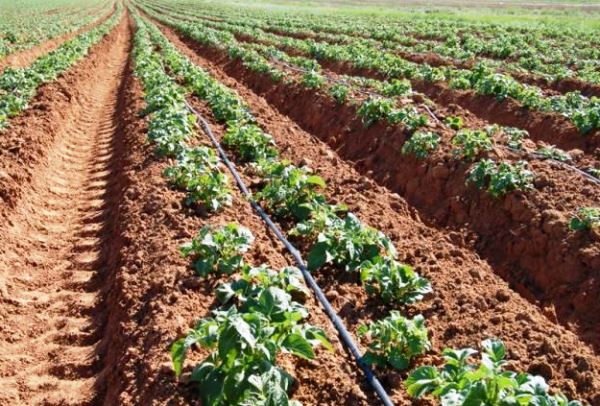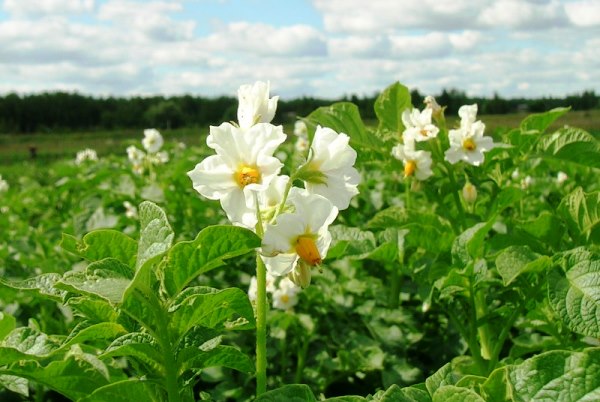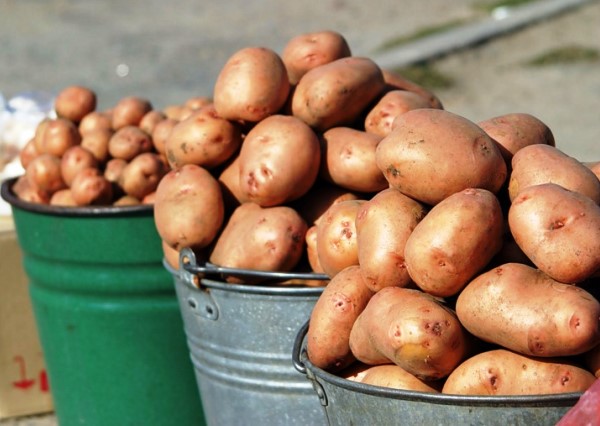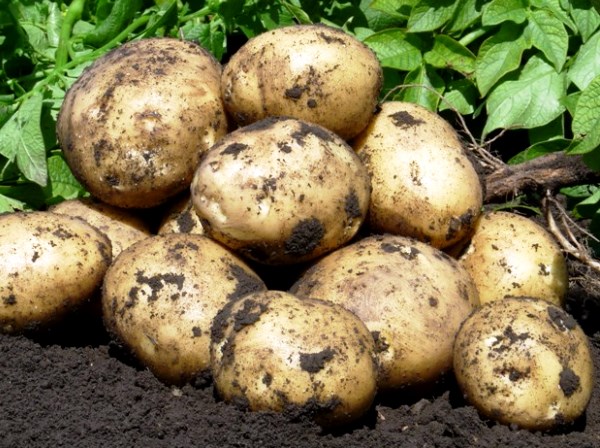The essence and advantages of Dutch potato growing technology
In our country, potatoes are considered the second bread. It is not surprising that this culture is planted by almost every gardener. Potatoes are an unpretentious crop, and following some advice, you can significantly increase its yield. Nowadays, the cultivation of potatoes according to the Dutch technology is becoming popular among farmers and ordinary gardeners. Previously, it was believed that this method cannot be used without special equipment, but having studied all the nuances in detail, we can conclude that the method is also suitable for growing crops in the country.
Content
Technology
When using Dutch technology, potatoes are planted not as early as possible, but when the soil is "ripe". It should not be too wet or dry. A lump of soil must be thrown on the ground, if it crumbles, you can start planting. Thus, the plant will be able to maximize the surface of the leaves, and the tubers will grow faster. Already in the fall, it is necessary to start preparing the soil - to plow to a depth of 22-27 cm. In the spring, 12-14 cm of the top layer of the soil must be processed with a milling cutter or a milling cutter-cultivator. Thus, the soil capillaries formed in the fall are preserved. Moisture will flow through these capillaries to the tuber. Also, milling will speed up the ripening process of potatoes by 7-10 days. It is necessary to plant seeds in areas with a high agricultural background.
It is important to select high quality seed potatoes. Tubers should be 3 to 5 cm in diameter, with 100% germination. One of the nuances of Dutch technology is planting already sprouted potatoes. It is important that the length of the shoots should not exceed 0.5 cm. Otherwise, they will break off, which will reduce the germination of the plant.
When growing potatoes using Dutch technology, there is a special planting scheme. In order for the plants not to grow too densely, you cannot plant more than 30 stems per 1 sq. meter. It also makes no sense to embed the planting material deeply, only 4 cm deep is enough. But immediately after the appearance of the first shoots, the hilling of the bushes is carried out. In the process of hilling, 25 cm ridges are formed. After that, inter-row tillage is no longer carried out. The row spacing is 75 cm. Sometimes up to 120 cm are left between pairs of rows for better passage of agricultural machinery and watering plants. Often, saving land, they make row spacing of 40-50 cm. In such conditions, it is difficult to huddle tubers. The plant will not grow and develop well. Potatoes may be bare and green.
Already on the 14-18 day after planting, when the first shoots appear, the first weeding of weeds needs to be carried out. Of course, 100% weed removal is ideal. It is difficult to do this manually, especially with large planting areas. In this case, milling cultivators with a bed former are used. With such a machine, processing is carried out very quickly, only well-loosened soil and ridges remain. With excess moisture, water will drain into the furrows and not harm the root system. Obviously, the weeds will continue to grow anyway, so you need to treat the soil with special herbicides. You also need to anticipate the development of a disease such as late blight. For this purpose, 5-6 chemical treatments are carried out. Many varieties are not resistant to droughts, so at least 3 waterings per season should be carried out: the first - before flowering, the second - 10 days after the flowers wilt, and the third after about 20 days.
Advantages
The main advantages of growing potatoes using the Dutch method are high yields. If you follow all the tips, then during the season you can collect up to 30-40 tons of potatoes per hectare of land. The main point is the quality of the planting material. The Dutch plant only high quality certified planting material, without viral or other diseases. Also, a feature of this method is the treatment of seeds from aphids - the main carrier of viruses. For this purpose, various chemicals are used. This technology reduces mechanical stress on potatoes. Domestic farmers usually remove diseased plants when clearing rows.
The method is based on the rapidity of plant growth and development. Due to this, the tubers are harvested early enough, even before they become infected with late blight or other diseases. This feature is commercially beneficial as early tubers can be sold at a much higher price. And to increase the preservation, the removal of the tops is provided, after which the potatoes are in the soil for another 10-12 days. Using this method, a strong peel is formed, which reduces mechanical damage to the tubers.
The method of growing potatoes using Dutch technology has its advantages. First, the wide aisles. This is the main condition for drip irrigation. Irrigation covers many more plants, which increases efficiency without increasing costs. The row spacing of 120 cm makes it easy to move the equipment necessary for processing plants. Thus, it is possible to automate the growing process and it will be convenient to harvest. Also, all the bushes are planted on the ridges, due to which the plants receive 70% more oxygen. With this method of planting, growth and development is accelerated, the development of many diseases, especially rot, is prevented.
What varieties to choose
It was mentioned earlier that the quality of the planting material is very important when growing potatoes using the Dutch method. It is best to use varieties of European, especially Dutch, selection. Let's consider the main types:
- Condor. This variety is highly resistant to drought and many diseases. Its main advantage is its high yield. In order for the potatoes to double in 2-3 weeks, it is necessary to provide abundant watering. If you feed plants, then you can easily collect up to 40-50 tons per hectare.
- Agria. This Dutch variety has the same yield as the previous one, and this is subject to normal care, without the use of growth stimulants or other top dressing. Farmers note that up to a thousand or more tubers weighing an average of 250 g are formed per one hundred square meters. The main disadvantage when growing this variety is that at temperatures above 25 degrees and humidity less than 85%, the yield may fall. In such conditions, mandatory watering and the introduction of ammonium nitrate are needed.
- Ariel. This variety is very easy to care for and is not used for industrial purposes. The average yield is 200-300 c / ha. It will be difficult to achieve the best performance.
- Romano. A high-yielding Dutch variety with a maximum yield of up to 80 tons per hectare, but in domestic conditions it was possible to harvest only up to 50 tons. The ripening period for potatoes is 90-110 days.
- Eba. One of the most popular varieties, it has been known in our area for over 12 years. The fruits are very easy to preserve, since the peel is thick enough, easily tolerates transportation and is resistant to mechanical damage. The potatoes themselves are very tasty and boil quickly.On average, up to 200-400 kg can be collected from a hundred square meters with periodic watering. It is important that the tubers do not rot and are not susceptible to pests (except for the Colorado potato beetle). Plants tolerate droughts quite well.
Also noted are such early varieties as Jarla, Cleopatra and Prior. The Frisia and Mona Lisa varieties have a fairly high immunity to viruses. Asterix is perfect for long-term storage.
The aforementioned varieties are bred mainly in Holland and are the most popular. The yield is about 200 kg / ha. If you want to plant more productive hybrids, do not forget that they are not suitable for sowing, and are used only in the first year of cultivation.
Potatoes are a rather unpretentious crop, but if you correctly treat its cultivation and, most importantly, choose a good variety, then the chances of a high yield, even in your country house, increase significantly.
Video "Dutch potato growing technologies"
The video tells about the methods of growing potatoes in the Netherlands and the introduction of these methods in the Lipetsk region.

